Spatial-Temporal Assessment of Satellite-Based Rainfall Estimates in Different Precipitation Regimes in Water-Scarce and Data-Sparse Regions
Abstract
1. Introduction
2. Materials and Methods
2.1. Study Region and Precipitation Patterns in the Three Sub-Divisions
- (1)
- Northern region: Al Buraymi, Muscat, Ad Dakhliyah, Al Batinah North and South, Al Dhahira, and Ash Shargiyah North and South Governorates
- (2)
- Interior region: Al Wusta Governorate
- (3)
- Dhofar region: Dhofar Governorate
2.2. Precipitation Dataset Description
2.2.1. Tropical Rainfall Measuring Mission (TRMM)
2.2.2. GPM Integrated Multi-Satellite Retrievals for GPM (IMERG)
2.2.3. Gauged Precipitation
2.3. Statistical Verification Techniques
2.3.1. Continuous Verification Index
2.3.2. Categorical Verification Index
2.3.3. Bayesian and Nonparametric Multiple Change Point Analyses
3. Results and Discussion
- (1)
- The distributional characteristics of the satellite products compared to the OBSERVED on monthly, seasonal, and annual time scales and also across all 11 governorates of Oman. Spatial distributions of the satellite products on an annual time scale were also considered.
- (2)
- Assessments of GPM and TRMM using continuous verification indices over the entire country and its subdivisions.
- (3)
- Assessments of seasonal TRMM and GPM using the Bayesian and non-parametric change point method from 2016–2018.
- (4)
- Assessment of GPM and TRMM using categorical verification indices over the entire country and its subdivisions.
3.1. Descriptive Statistical Evaluation
3.2. Monthly, Seasonal, and Annual Assessments of GPM and TRMM
3.3. Assessments of GPM and TRMM using Continuous Verification Indices
3.4. Performance Assessments of GPM and TRMM Using Change Point Analysis
3.5. Performance Assessments of GPM and TRMM Using Categorical Verification Indices
3.6. Importance of Precipitation Estimates and Analysis in Socio-Hydrologic Resilience
4. Conclusions
- (1)
- There was generally a weak linear relationship between GPM and TRMM in all the regions and years considered for the entire period of study, except for the good correlation observed in the Northern region and also in 2016 (for the entire country). The year 2016 was without any cyclone event and was generally dry except for heavy rain in March 2016. The weak performances seen in the Dhofar region may be due to the two distinct physiographic features in the areas (mountain and coastal climates). The Dhofar region may need to be analyzed separately in future studies to more accurately assess the performance of the satellite products in the region. Examining the products across all 11 governorates of Oman, there was consistent spatial variability in the satellite products, especially in regions where there are relatively few gauged networks. Bias corrections may be needed to be performed on the products before being used for any real-time applications.
- (2)
- In Oman, both products can detect low to medium precipitation thresholds; however, both have difficulty detecting precipitations at higher thresholds. In terms of BIAS, both products overestimated precipitation compared to OBSERVED at low precipitation thresholds, but underestimated precipitation levels at high thresholds. Of the three regions considered, there was a similar performance of the satellite products in all the regions, confirming the similarities in the algorithms used to produce them. For all the regions, the weak correlation performances noted above also reflect in the categorical performance.
- (3)
- From the change point analysis perspective, TRMM and GPM compared well with OBSERVED in their ability to detect seasonal changes or aberrations in both annual and seasonal scales. Although there were differences in terms of the posterior mean obtained from bcp, there were similarities in change points or aberrations in the rain-gauge station locations across all the years. In general, TRMM and GPM showed similar characteristics with the OBSERVED in the number and timing of seasonal changes computed across the years.
- (4)
- In terms of measuring annual precipitation, the two satellite products demonstrated the same spatial pattern as the OBSERVED over the three study years (except 2018, when there was a tropical storm and a cyclone). In all the years, there was strong agreement between TRMM and GPM in terms of spatial distribution and magnitude.
Funding
Acknowledgments
Conflicts of Interest
References
- Chung-Chen, J.; Kot, S.C.; Tepper, M. Comparing NOAA-12 and Radiosonde Atmospheric Sounding Profiles for Mesoscale Weather Model Initialization. In COSPAR Colloquia Series; Elsevier: Amsterdam, The Netherlands, 1997; pp. 103–109. [Google Scholar] [CrossRef]
- Food and Agriculture Organization. Climate Change and Food Security: A Framework Document; Food and Agriculture Organization of the United Nations (FAO): Rome, Italy, 2008; Available online: www.fao.org/forestry/15538-079b31d45081fe9c3dbc6ff34de4807e4.pdf (accessed on 26 May 2020).
- Ballester, J.; More, J. The representativeness problem of a station net applied to the verification of a precipitation forecast based on areas. Meteorol. Appl. 2007, 14, 177–184. [Google Scholar] [CrossRef]
- Saulo, A.C.; Ferreira, L. Evaluation of quantitative precipitation forecasts over southern South America. Aust. Meteorol. Mag. 2003, 52, 81–93. [Google Scholar]
- Tustison, B.; Harris, D.; Foufoula-Georgiou, E. Scale issues in verification of precipitation forecasts. J. Geophys. Res. 2001, 106, 11775–11784. [Google Scholar] [CrossRef]
- Directorate General of Meteorology and Air Navigation (2012). Annual Report on Activities in Meteorology. National Report submitted to the Panel on Tropical Cyclones in the Bay of Bengal and Arabian Sea. In Proceedings of the 39th Session, Nay Pye Taw, Myanmar, 5–9 February 2012; Available online: https://www.wmo.int/pages/prog/www/tcp/documents/Oman.doc (accessed on 20 January 2020).
- WMO. Guide to Hydrological Practices. Volume I. Hydrology-From Measurement to Hydrological Information. WMO-No. 168, 6th ed.; WMO: Geneva, Switzerland, 2008. Available online: http://www.wmo.int/pages/prog/hwrp/publications/guide/english/168_Vol_I_en.pdf (accessed on 22 December 2019).
- Boluwade, A.; Stadnyk, T.; Fortin, V.; Roy, G. Assimilation of precipitation Estimates from the Integrated Multisatellite Retrievals for GPM (IMERG, early Run) in the Canadian Precipitation Analysis (CaPA). J. Hydrol. Reg. Stud. 2017, 14, 10–22. [Google Scholar] [CrossRef]
- Huffman, G.J.; Adler, R.F.; Bolvin, D.T.; Nelkin, E.J. The TRMM Multi-satellite Precipitation Analysis (TMPA). Chapter 1. In Satellite Rainfall Applications for Surface Hydrology; Springer: Dordrecht, The Netherlands, 2010; pp. 3–22. [Google Scholar] [CrossRef]
- Horishima, K. Rainfall observation from Tropical Rainfall Measuring Mission (TRMM) satellite. J. Vis. 1999, 2, 93–98. [Google Scholar] [CrossRef]
- Flaming, G.M. Measurement of global precipitation. In Proceedings of the 2004 IEEE International Geoscience and Remote Sensing Symposium (IGARSS 2004), Anchorage, AK, USA, 20–24 September 2004; IEEE: New York, NY, USA, 2004. [Google Scholar] [CrossRef]
- Kummerow, C.J.; Simpson, O.; Thiele, W.; Barnes, A.T.; Chang, E.; Stocker, R.F.; Adler, A.; Hou, R.; Kakar, F.; Wentz, P.; et al. The Status of the Tropical Rainfall Measuring Mission (TRMM) after Two Years in Orbit. J. Appl. Meteor. 2000, 39, 1965–1982. [Google Scholar] [CrossRef]
- Tropical Rainfall Measuring Mission (TRMM). TRMM (TMPA/3B43) Rainfall Estimate L3 1 Month 0.25 Degree × 0.25 Degree V7; Goddard Earth Sciences Data and Information Services Center (GES DISC): Greenbelt, MD, USA, 2011. Available online: https://disc.gsfc.nasa.gov/datasets/TRMM_3B43_7/summary (accessed on 3 March 2020). [CrossRef]
- Yuan, F.; Wang, B.; Shi, C.; Cui, W.; Zhao, C.; Liu, Y.; Ren, L.; Zhang, L.; Zhu, Y.; Chen, T.; et al. Evaluation of hydrological utility of IMERG Final run V05 and TMPA 3B42V7 satellite precipitation products in the Yellow River source region, China. J. Hydrol. 2018, 567, 696–711. [Google Scholar] [CrossRef]
- Silva Lelis, L.C.; Duarte Bosquilia, R.W.; Duarte, S.N. Assessment of Precipitation Data Generated by GPM and TRMM Satellites. Rev. Bras. Meteorol. 2018, 33, 153–163. [Google Scholar] [CrossRef]
- Rozante, J.R.; Vila, D.A.; Chiquetto, J.B.; Fernandes, A.A.; Alvim, D.S. Evaluation of TRMM/GPM Blended Daily Products over Brazil. Remote Sens. 2018, 10, 882. [Google Scholar] [CrossRef]
- Xu, R.; Tian, F.Q.; Yang, L.; Hu, H.C.; Lu, H.; Hou, A.Z. Ground validation of GPM IMERG and TRMM 3B42V7 rainfall products over southern Tibetan Plateau based on a high-density rain gauge network. J. Geophys. Res. Atmos. 2017, 122, 910–924. [Google Scholar] [CrossRef]
- Zhang, S.; Wang, D.; Qin, Z.; Zheng, Y.; Guo, J. Assessment of the GPM and TRMM Precipitation Products Using the Rain Gauge Network over the Tibetan Plateau. J. Meteorol. Res. 2018, 32, 324. [Google Scholar] [CrossRef]
- Boluwade, A.; Zhao, K.Y.; Stadnyk, T.A.; Rasmussen, P. Towards Validation of the Canadian Precipitation Analysis (CaPA) for Hydrologic Modeling Applications in the Canadian Prairies. J. Hydrol. 2018, 556. [Google Scholar] [CrossRef]
- Matteson, D.S.; James, N.A. A Nonparametric Approach for Multiple Change Point Analysis of Multivariate Data. J. Am. Stat. Assoc. 2014, 109, 334–345. [Google Scholar] [CrossRef]
- Erdman, C.; Emerson, J.W. A fast Bayesian change point analysis for the segmentation of microarray data. Bioinformatics 2008, 24, 2143–2148. [Google Scholar] [CrossRef] [PubMed]
- Eslamiana, S.; Naser, M.; Symec, R.G. Building socio-hydrological resilience: From theory to practice. J. Hydrol. 2019, 575, 930–932. [Google Scholar] [CrossRef]
- Kwarteng, A.Y.; Dorvlo, A.S.; Vijaya Kumar, G.T. Analysis of a 27-year rainfall data (1977–2003) in the Sultanate of Oman. Int. J. Climatol. 2009, 29, 605–617. [Google Scholar] [CrossRef]
- Al-Shaqsi, S. Care or Cry: Three years from Cyclone Gonu. What have we learnt? OMJ 2010, 25, 162–167. Available online: http://www.omjournal.org/OriginalArticles/FullText/201007/FT_CareorCry.html (accessed on 22 December 2019). [CrossRef]
- India Meteorological Department (January 2008). “Report on Cyclonic Disturbances over North Indian Ocean during 2007”. Archived from the Original on 26 November 2008. Retrieved 18 April 2010. Available online: https://www.webcitation.org/5ccClL6ET?url=http://sonicfighters.com/rattleman/other/tropics/IMD_2007_Report_HTML.html (accessed on 22 December 2019).
- Masters, J. Earth’s 39 Billion-Dollar Weather Disasters of 2018: 4th-Most on Record. 2019. Available online: https://www.wunderground.com/cat6/Earths-39-Billion-Dollar-Weather-Disasters-2018-4th-Most-Record (accessed on 22 December 2019).
- Adler, R.F.; Huffman, G.J.; Bolvin, D.T.; Curtis, S.; Nelkin, E.J. Tropical rainfall distributions determined using TRMM combined with other satellite and rain gauge information. J. Appl. Meteorol. 2000, 39, 2007–2023. [Google Scholar] [CrossRef]
- Chiu, L.S.; Liu, Z.; Rui, H.; Teng, L.W. TRMM data and Access Tools. In Earth Science Satellite Remote Sensing; Qu, J.J., Gao, W., Kafatos, M., Murphy, R.E., Salomonson, V.V., Eds.; Springer and Tsinghua University Press: Beijing, China, 2006; pp. 202–219. [Google Scholar]
- Nicholson, S.E.B.; Some, J.; McCollum, E.; Nelkin, D.; Klotter, Y.; Berte, B.M.; Diallo, I.; Gaye, G.; Kpabeba, O.; Ndiaye, J.N.; et al. Validation of TRMM and Other Rainfall Estimates with a High-Density Gauge Dataset for West Africa. Part I: Validation of GPCC Rainfall Product and Pre-TRMM Satellite and Blended Products. J. Appl. Meteorol. 2003, 42, 1337–1354. [Google Scholar] [CrossRef]
- Liu, Z. Comparison of Integrated Multisatellite Retrievals for GPM (IMERG) and TRMM Multisatellite Precipitation Analysis (TMPA) Monthly Precipitation Products: Initial Results. J. Hydrometeorol. 2016, 17. [Google Scholar] [CrossRef]
- Schmidt, E.J.; Schulze, R.E. Flood Volume and Peak Discharge from Small Catchments in Southern Africa Based on the SCS Technique; WRC Report No. TT 31/8; Water Research Commission: Pretoria, South Africa, 1987; p. 164. [Google Scholar]
- Dent, M.C.; Lynch, S.D.; Schulze, R.E. Mapping Mean Annual and Other Rainfall Statistics Over Southern Africa; Agricultural Research Unit Report No. 27; University of Natal: Pietermaritzburg, South Africa, 1987. [Google Scholar]
- Arteaga-Ramirez, R.; Tijerina-Chavez, L.; Valdez-Cepeda, R.D.; Vazquez-Pena, M.A.; Mejia-Saenz, E. Temporal and spatial representativeness of the information of extreme temperatures in a network of meteorological stations in Guanajuato, Mexico. Ing. Hidraul. Mexico 2004, 19, 53–64. [Google Scholar]
- Hou, A.Y.; Skofronick-Jackson, G.; Kummerow, C.D.; Shepherd, J.M. Global Precipitation Measurement. Part II: Precipitation: Advances in Measurement, Estimation and Prediction; Springer: Berlin/Heidelberg, Germany, 2008; pp. 131–169. [Google Scholar] [CrossRef]
- Huffman, G.J.; Bolvin, D.T.; Nelkin, E.J. Integrated Multi-Satellite Retrievals for GPM (IMERG) Technical Documentation; NASA/GSFC: Greenbelt, MD, USA, 2017.
- Tan, J.; Petersen, W.A.; Kirstetter, P.E.; Tian, Y.D. Performance of IMERG as a function of spatio-temporal scale. J. Hydrometeorol. 2017, 18, 307–319. [Google Scholar] [CrossRef] [PubMed]
- Becker, A. The Global Precipitation Climatology Centre (GPCC) to Support the GCW on ECV Precipitation: Caps and Constrains. In Proceedings of the 1st GCW Implementation Meeting, Geneva, Switzerland, 21–24 November 2011; pp. 1–40. Available online: https://www.wmo.int/pages/prog/www/OSY/Meetings/GCW-IM1/Doc12.4_GPCC.pdf (accessed on 4 December 2019).
- World Climate Research Programme (WCRP). WWRP/WGNE Joint Working Group on Forecast Verification Research. Forecast Verification Methods Across Time and Space Scales; WCRP: Berlin, Germany, 2017. Available online: https://www.cawcr.gov.au/projects/verification/ (accessed on 22 December 2019).
- World Meteorological Organization. Chapter 14. Observation of present and past weather; state of the ground. In Guide to Meteorological Instruments and Methods of Observation; WMO: Geneva, Switzerland, 2012; pp. 14–19. [Google Scholar]
- Llasat, M.C. An objective classification of rainfall events on the basis of their convective features: Application to rainfall intensity in the northeast of Spain. Int. J. Climatol. 2001, 21, 1385–1400. [Google Scholar] [CrossRef]
- Roebber, P.J. Visualizing multiple measures of forecast quality. Weather Forecast. 2009, 24, 601–608. [Google Scholar] [CrossRef]
- Gilleland, M.E. Package ‘Verification’. Available online: http://cran.utstat.utoronto.ca/web/packages/verification/verification.pdf (accessed on 25 September 2019).
- Boluwade, A. Regionalization and Partitioning of Soil Health Indicators for Nigeria Using Spatially Contiguous Clustering for Economic and Social-Cultural Developments. ISPRS Int. J. Geo-Inform. 2019, 8, 458. [Google Scholar] [CrossRef]
- Vostrikova, L. Detection Disorder in Multidimensional Random Processes. Sov. Math. Dokl. 1981, 24, 55–59. [Google Scholar]
- Sz’ekely, G.J.; Rizzo, M.L. Hierarchical Clustering via Joint Between-Within Distances: Extending Ward’s Minimum Variance Method. J. Classif. 2005, 22, 151–183. [Google Scholar] [CrossRef]
- Floodlist, Oman. Oman and Yemen—Tropical Cyclone ‘Luban’ Leaves 3 Dead. Available online: http://floodlist.com/tag/oman (accessed on 22 December 2019).
- Tan, M.; Duan, Z. Assessment of GPM and TRMM Precipitation Products over Singapore. Remote Sens. 2017, 9, 720. [Google Scholar] [CrossRef]
- Toté, C.; Patricio, D.; Boogaard, H.; Van der Wijngaart, R.; Tarnavsky, E.; Funk, C. Evaluation of Satellite Rainfall Estimates for Drought and Flood Monitoring in Mozambique. Remote Sens. 2015, 7, 1758–1776. [Google Scholar] [CrossRef]
- Yin, Z.Y.; Zhang, X.; Liu, X.; Colella, M.; Chen, X. An assessment of the biases of satellite rainfall estimates over the Tibetan Plateau and correction methods based on topographic analysis. J. Hydrometeorol. 2008, 9, 301–326. [Google Scholar] [CrossRef]
- Lespinas, F.; Fortin, V.; Roy, G.; Rasmussen, P.; Stadnyk, T. Performance evaluation of the canadian precipitation analysis (CaPA). J. Hydrometeor. 2015, 16, 2045–2064. [Google Scholar] [CrossRef]
- Fortin, V.; Roy, G.; Donaldson, N.; Mahidjiba, A. Assimilation of radar quantitative precipitation estimations in the Canadian Precipitation Analysis (CaPA). J. Hydrol. 2015, 531, 296–307. [Google Scholar] [CrossRef]
- Friesen, B.; Boluwade, A.; Rasmussen, P.F.; Fortin, V. Assimilation of satellite-based rainfall estimations in the Canadian precipitation analysis. J. Hydrol. Eng. 2017, 22, 04017049. [Google Scholar] [CrossRef]






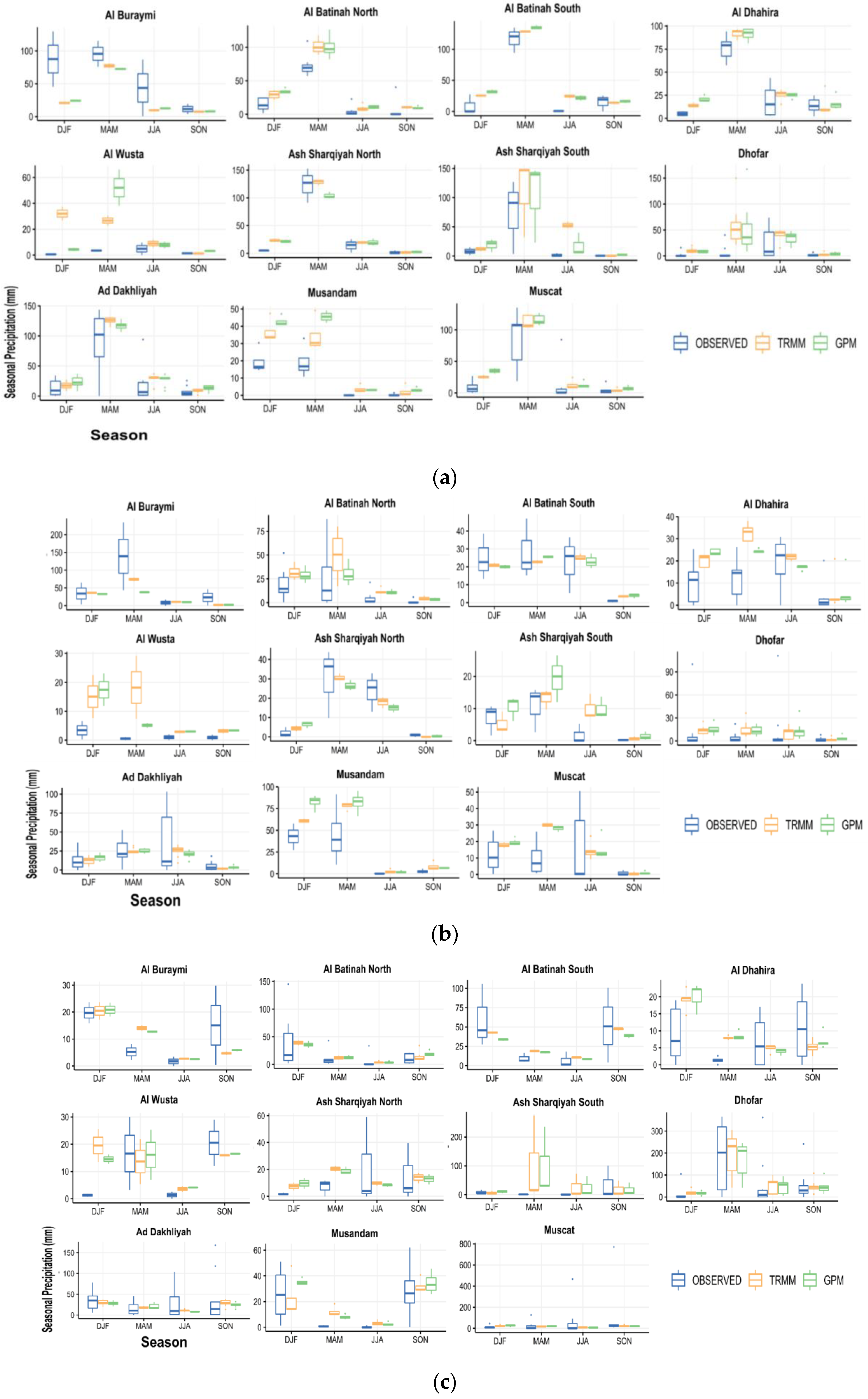
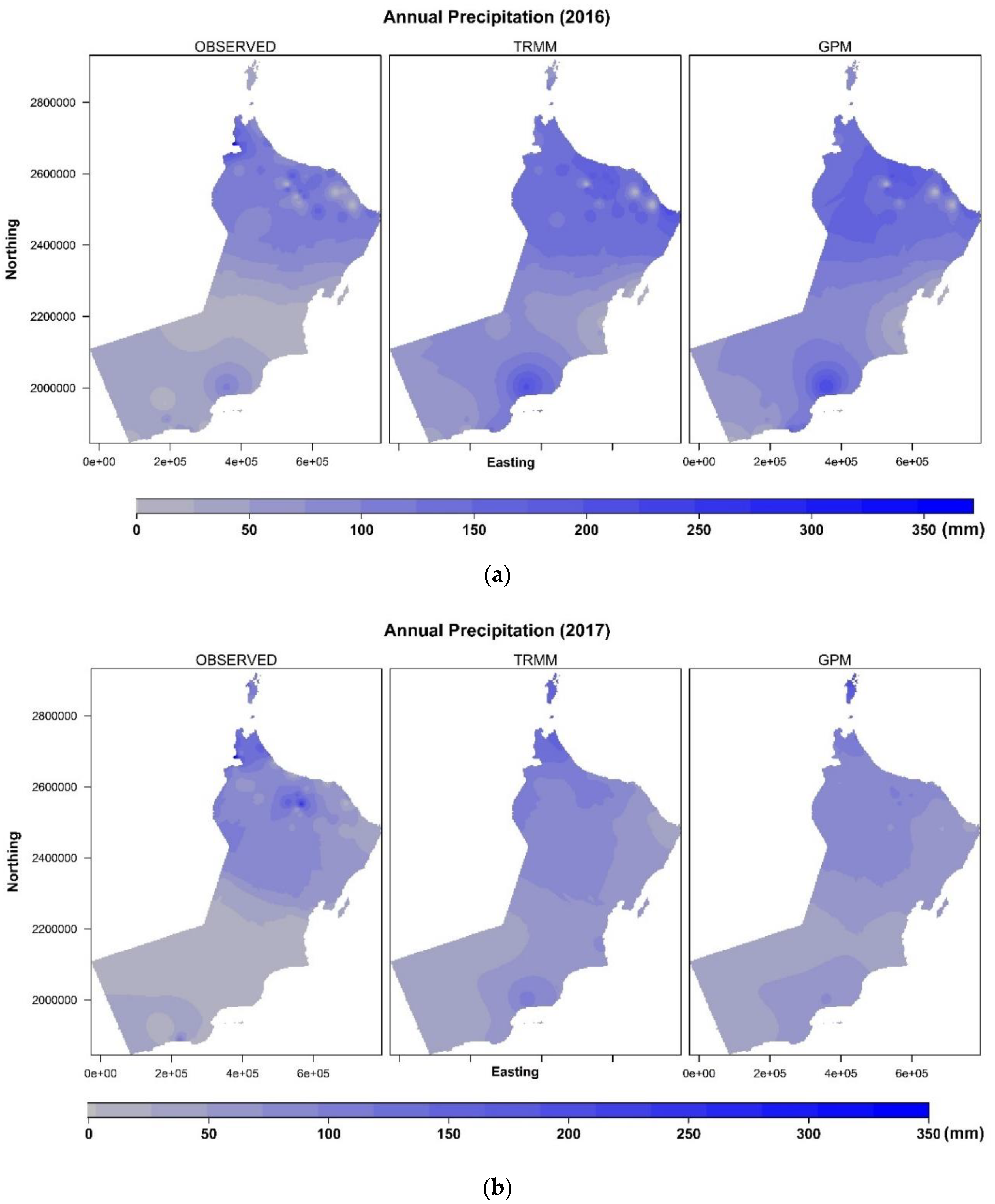

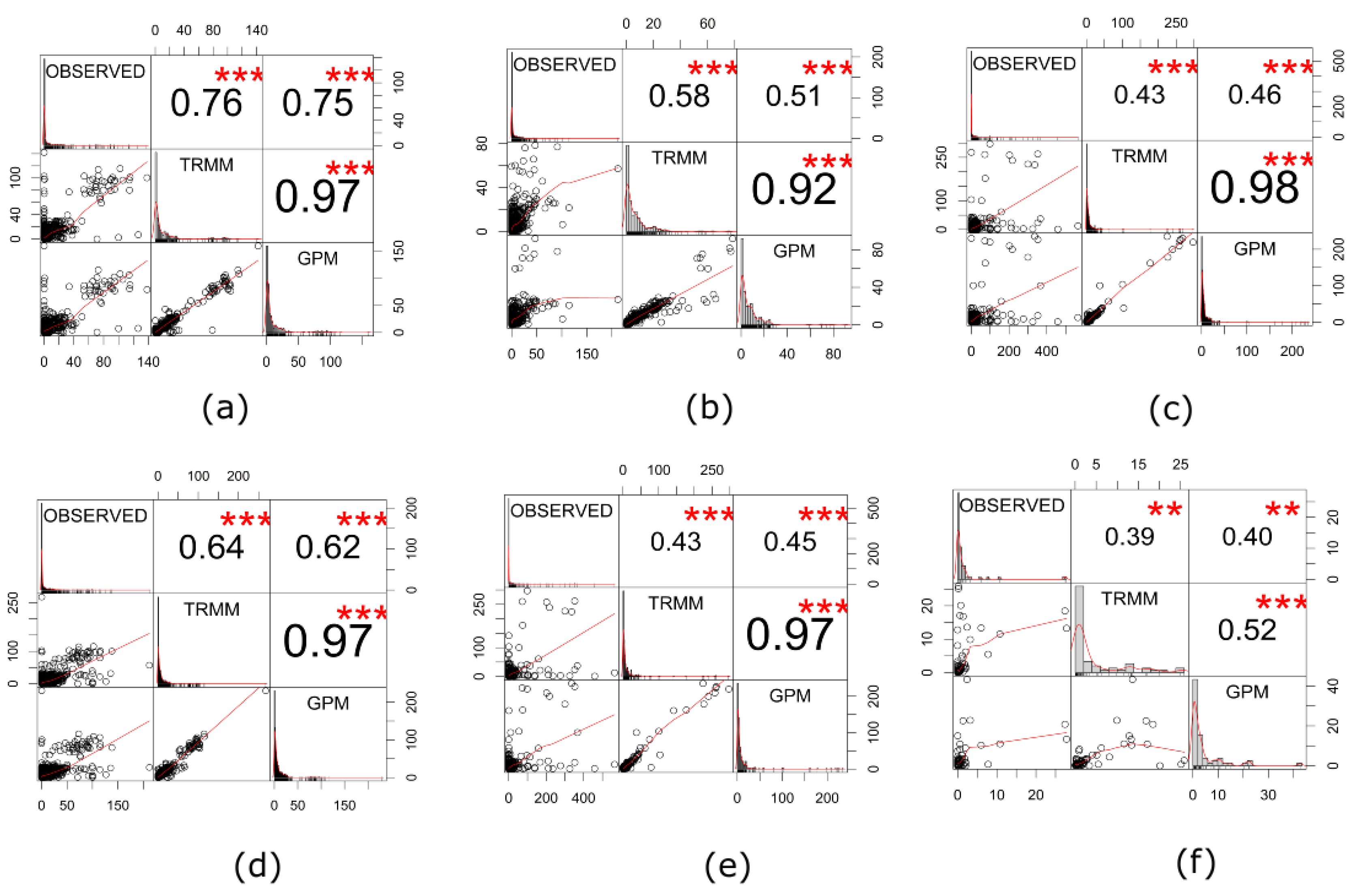
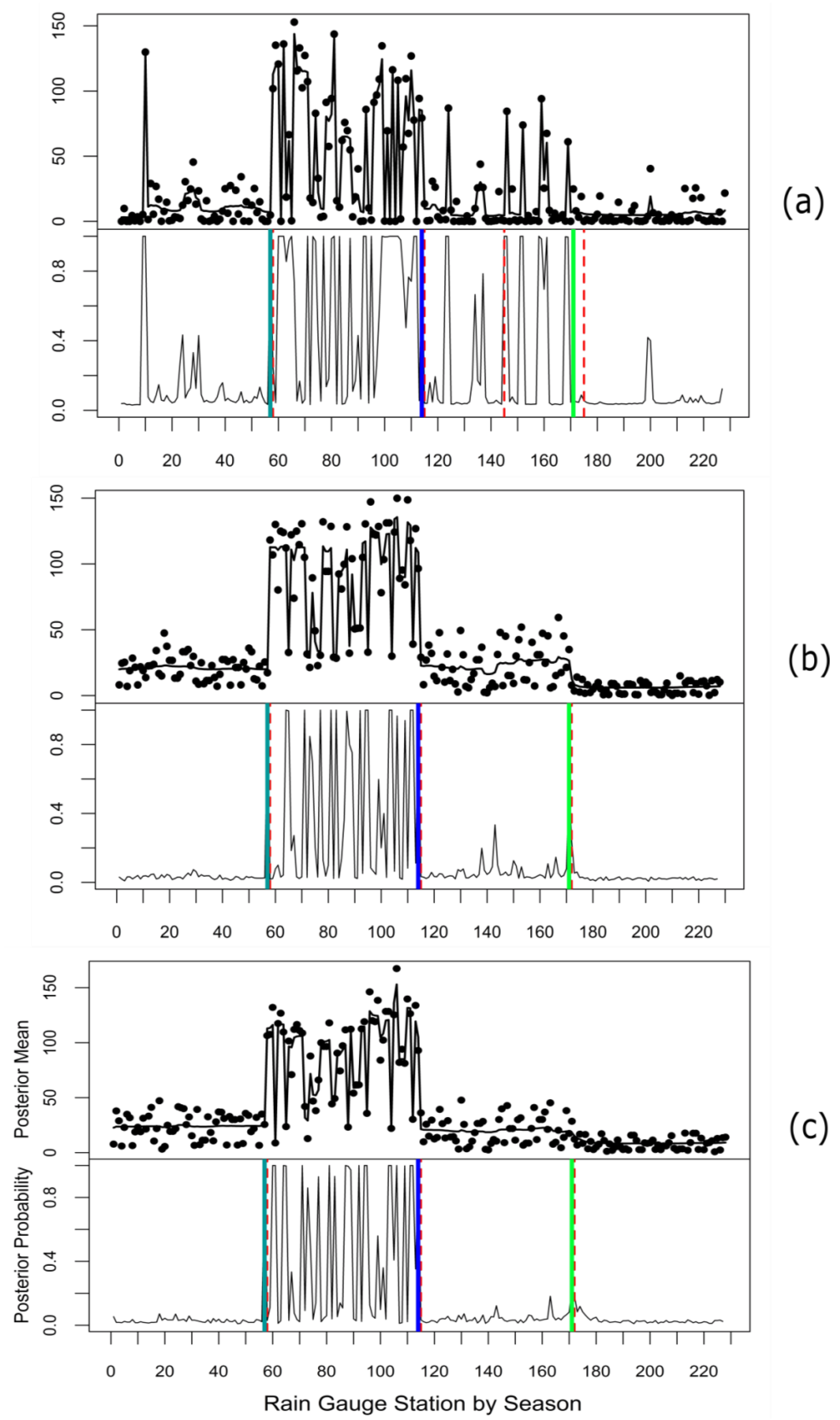

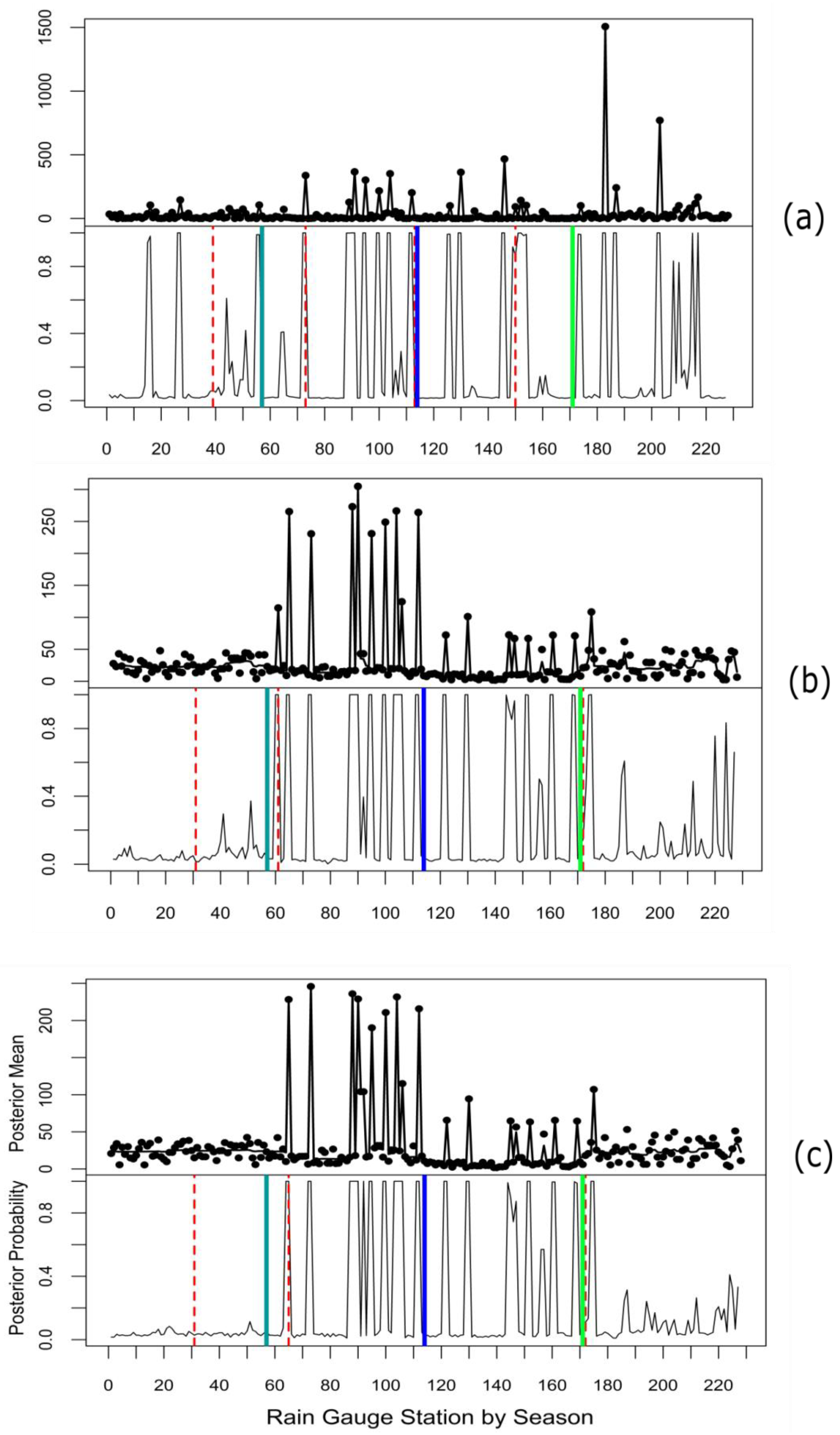

| Dataset Used | Period | Source |
|---|---|---|
| OBSERVED | 2016–2018 | National Centre for Statistics and Information, Oman (http://www.data.gov.om/) |
| Tropical Rainfall Measuring Mission (TRMM) at 0.25° Spatial resolution | 2016–2018 | United States’ NASA’s Earth Observing System Data and Information System (EOSDIS) Channel (https://giovanni.gsfc.nasa.gov/giovanni/) |
| Global Precipitation Measurement (GPM) at 0.10° Spatial resolution | 2016–2018 | United States’ NASA’s Earth Observing System Data and Information System (EOSDIS) Channel (https://giovanni.gsfc.nasa.gov/giovanni/) |
| OBSERVED | ||||
|---|---|---|---|---|
| Gauge Rain | Gauge No-Rain | Total | ||
| Satellite products | Satellite Rain | H | FA | H + FA |
| Satellite no-rain | M | CN | M+CN | |
| Total | H + M | FA + CN | (H + FA + M + CN) | |
| Performance Index | Description | Formula |
|---|---|---|
| Correlation (r) | This test measures the linear relationship or phase error between the satellite observations and OBSERVED or how well both products correspond, expressed as | where and are average values of satellite and OBSERVED, respectively. Ranged from –1 to 1 with a perfect score equal to 1 |
| Mean Absolute Error (MAE) | MAE can be described as the average difference between satellite and OBSERVED. In other words, this metric estimates the closeness of the satellite products to the OBSERVED. MAE can range from 0 to α with an optimal value approaching 0. | |
| Root Mean Square Error (RMSE) | RMSE measures the average error, which is weighted based on the square of the error. RMSE also indicates sample standard deviation between the satellite observation and OBSERVED. The optimal value for RSME is 0. | |
| Probability of Detection (POD) | POD is also known as the “hit rate.” It is an index that combines both “misses” and “hits” from the contingency table. The optimal value is 1. | |
| False Alarm Ratio (FAR) | FAR is an index that quantifies the failure of the satellite products to mismatch the OBSERVED no rain occurrence. It is always used in conjunction with POD, having a perfect value of FAR = 0 and POD = 1. In the performance diagram examined herein, the success ratio (SR; equal to 1-FAR) is plotted against POD. | |
| Frequency Bias (BIAS) | BIAS is the ratio of the total number of frequencies of satellite observations to the frequencies of the OBSERVED, with a perfect score of 1. | |
| Critical Success Index (CSI) | CSI quantifies the fraction of OBSERVED and/or satellite precipitation that was correctly predicted [31]. The index ranges from 0 to 1, with a perfect score of 1. |
| Year | Statistics | OBSERVED (mm/year) | TRMM (mm/year) | GPM (mm/year) |
|---|---|---|---|---|
| 2016 | Mean | 84.8 | 118.9 | 121.9 |
| Standard Deviation | 66.1 | 60.2 | 60.5 | |
| CV (%) | 78.0 | 50.6 | 49.6 | |
| Minimum | 0.0 | 0.1 | 0.9 | |
| Maximum | 349.6 | 220.3 | 223.3 | |
| 2017 | Mean | 77.2 | 85.5 | 81.9 |
| Standard Deviation | 66.2 | 36.5 | 35.7 | |
| CV (%) | 85.8 | 42.7 | 43.5 | |
| Minimum | 2.2 | 27.7 | 35.5 | |
| Maximum | 329.8 | 166.6 | 203.2 | |
| 2018 | Mean | 179.9 | 103.4 | 98.3 |
| Standard Deviation | 382.7 | 118.3 | 102.4 | |
| CV (%) | 212.8 | 114.5 | 104.2 | |
| Minimum | 0.0 | 20.5 | 21.3 | |
| Maximum | 2031.8 | 426.2 | 406.5 |
| Region | Satellite Products | MAE (mm/Month) | RMSE (mm/Month) |
|---|---|---|---|
| Sultanate of Oman | GPM | 9.48 | 36.68 |
| TRMM | 9.43 | 37.13 | |
| Dhofar Region | GPM | 18.57 | 56.93 |
| TRMM | 18.81 | 58.24 | |
| Northern Region | GPM | 6.49 | 15.06 |
| TRMM | 6.37 | 15.17 | |
| Interior Region | GPM | 3.63 | 7.53 |
| TRMM | 3.55 | 7.01 |
© 2020 by the author. Licensee MDPI, Basel, Switzerland. This article is an open access article distributed under the terms and conditions of the Creative Commons Attribution (CC BY) license (http://creativecommons.org/licenses/by/4.0/).
Share and Cite
Boluwade, A. Spatial-Temporal Assessment of Satellite-Based Rainfall Estimates in Different Precipitation Regimes in Water-Scarce and Data-Sparse Regions. Atmosphere 2020, 11, 901. https://doi.org/10.3390/atmos11090901
Boluwade A. Spatial-Temporal Assessment of Satellite-Based Rainfall Estimates in Different Precipitation Regimes in Water-Scarce and Data-Sparse Regions. Atmosphere. 2020; 11(9):901. https://doi.org/10.3390/atmos11090901
Chicago/Turabian StyleBoluwade, Alaba. 2020. "Spatial-Temporal Assessment of Satellite-Based Rainfall Estimates in Different Precipitation Regimes in Water-Scarce and Data-Sparse Regions" Atmosphere 11, no. 9: 901. https://doi.org/10.3390/atmos11090901
APA StyleBoluwade, A. (2020). Spatial-Temporal Assessment of Satellite-Based Rainfall Estimates in Different Precipitation Regimes in Water-Scarce and Data-Sparse Regions. Atmosphere, 11(9), 901. https://doi.org/10.3390/atmos11090901





